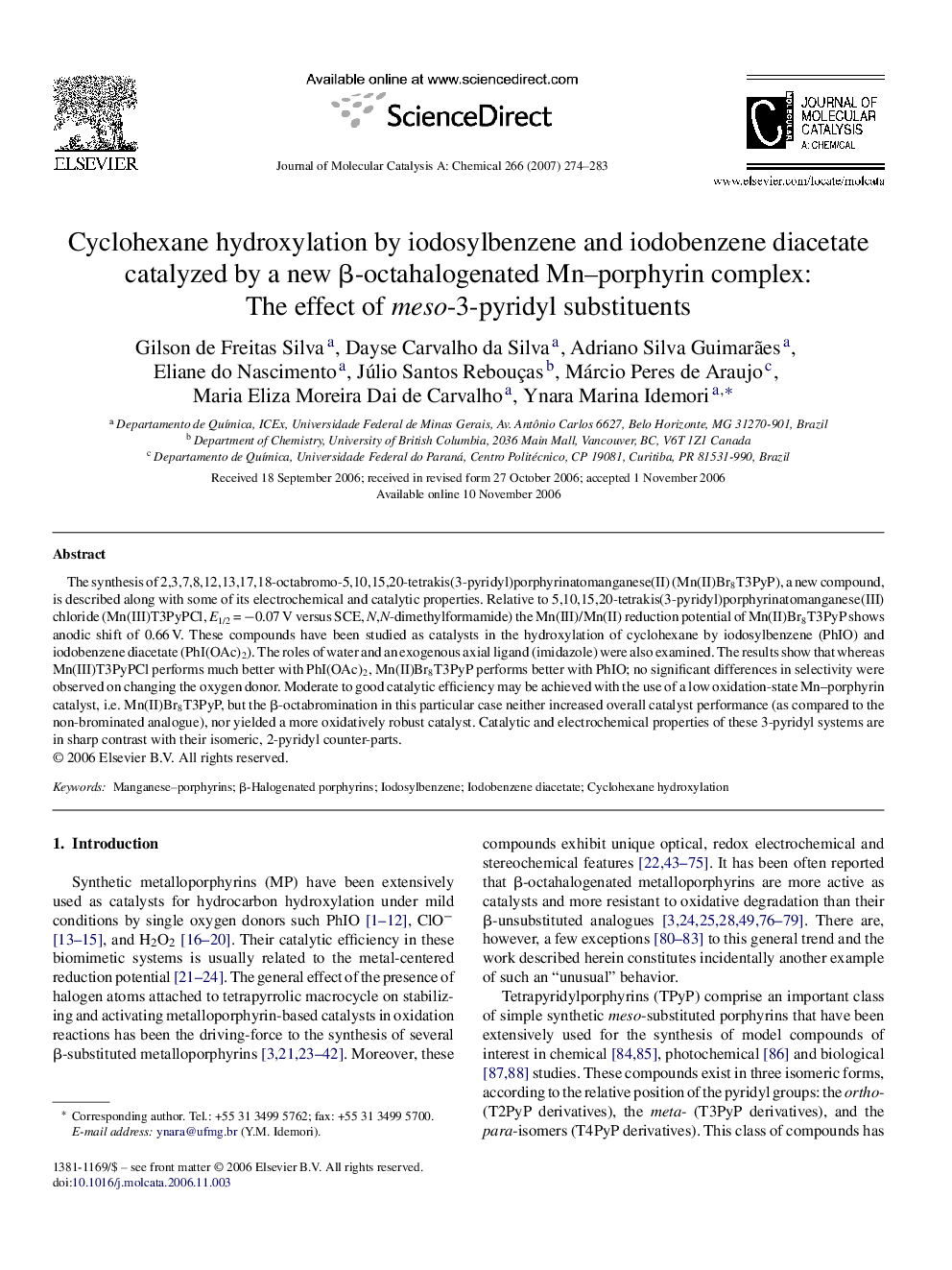| کد مقاله | کد نشریه | سال انتشار | مقاله انگلیسی | نسخه تمام متن |
|---|---|---|---|---|
| 68008 | 48500 | 2007 | 10 صفحه PDF | دانلود رایگان |

The synthesis of 2,3,7,8,12,13,17,18-octabromo-5,10,15,20-tetrakis(3-pyridyl)porphyrinatomanganese(II) (Mn(II)Br8T3PyP), a new compound, is described along with some of its electrochemical and catalytic properties. Relative to 5,10,15,20-tetrakis(3-pyridyl)porphyrinatomanganese(III) chloride (Mn(III)T3PyPCl, E1/2 = −0.07 V versus SCE, N,N-dimethylformamide) the Mn(III)/Mn(II) reduction potential of Mn(II)Br8T3PyP shows anodic shift of 0.66 V. These compounds have been studied as catalysts in the hydroxylation of cyclohexane by iodosylbenzene (PhIO) and iodobenzene diacetate (PhI(OAc)2). The roles of water and an exogenous axial ligand (imidazole) were also examined. The results show that whereas Mn(III)T3PyPCl performs much better with PhI(OAc)2, Mn(II)Br8T3PyP performs better with PhIO; no significant differences in selectivity were observed on changing the oxygen donor. Moderate to good catalytic efficiency may be achieved with the use of a low oxidation-state Mn–porphyrin catalyst, i.e. Mn(II)Br8T3PyP, but the β-octabromination in this particular case neither increased overall catalyst performance (as compared to the non-brominated analogue), nor yielded a more oxidatively robust catalyst. Catalytic and electrochemical properties of these 3-pyridyl systems are in sharp contrast with their isomeric, 2-pyridyl counter-parts.
The Mn(II)Br8T3PyP complex, a new β-octabrominated derivative of Mn(III)T3PyPCl, exhibits unexpected catalytic and electrochemical properties, which are in sharp contrast to the ortho-isomer analogue and other perbrominated porphyrin complexes. Catalytic efficiency could be tuned by the choice of oxidant (PhIO or PhI(OAc)2) and/or the use of additives (imidazole, water), but bromination did not yield overall an oxidatively robust catalyst. Figure optionsDownload as PowerPoint slide
Journal: Journal of Molecular Catalysis A: Chemical - Volume 266, Issues 1–2, 2 April 2007, Pages 274–283